We have found 18 possible answers to the question, “What is the circumference of the globe?” This should give you enough information to find the answer you are looking for.
Eratosthenes calculated that the Earth’s meridian has a circumference of 250,000 stadia, which is equivalent to 39,500 kilometers. As we know, the formula for finding the circumference is S=2piR.
What is the size of Earth’s diameter?
The Earth has an average diameter of approximately 12,742 km, with a circumference of 40,000 km. The measurement of a meter was historically defined as 1/10,000,000 of the distance from the equator to the north pole through Paris. However, due to an error in accounting for the Earth’s poleward compression, the 1795 meter standard was slightly shorter by about 0.2 mm.
What is the circumference of the Earth?
The Earth’s circumference is 40075 km at the equator and 40008 km at the poles.
How long is the planet Earth?
The length of the Earth’s meridian is 40008.5 km, while the length of the equator is 40075.7 km. Additionally, the surface area of the Earth is 510 million km2.
What is the size of the Earth’s equatorial circumference?
The Earth’s equatorial circumference measures 40,075.017 kilometers. The circumference along the meridian is slightly shorter at 40,007.863 kilometers. The Earth has an equatorial radius of 6,378.1 kilometers.
What is the circumference of the planet? User Answers
When asked about the shape of the Earth, many people mistakenly believe it is a perfect sphere. However, the planet is influenced by various forces.
Among the terrestrial group of planets, Earth is the largest in terms of circumference and diameter. The equatorial circumference of the Earth is .
For example, in 2007, it was discovered that since 2000, the size of the Earth has decreased by five millimeters. The Earth’s circumference at the equator is 40000 kilometers, and how many kilometers would it be.
The equator separates the Earth into two hemispheres known as the Northern and Southern Hemispheres. It plays a significant role in determining the planet’s climate zones. The Earth. The closer one gets to the .
The poles (the northernmost and southernmost points of Earth). The equator also divides the Earth into Northern and Southern Hemispheres, serving as an important boundary for .
Discover the Earth’s diameter. How does the circumference of a planet differ from its diameter? What factors should be considered when determining .
What is the length of a planet’s circumference
Video explanations of the planet’s circumference
How to determine the planet’s circumference.
This video provides a thorough explanation of how the ancient scientist Eratosthenes calculated the circumference of the Earth. Filming .
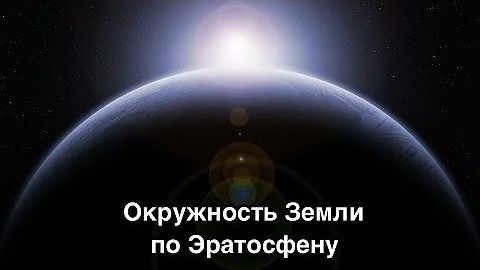
How to Calculate the Circumference of the Earth
Learn how to calculate the circumference of the Earth. Understanding the size and shape of our planet is important. The geoid is the true shape of our planet Earth. Let’s find out how to measure it.

Ancient Greeks’ Proof of Earth’s Sphericity by Plushkin
The knowledge of the spherical shape of our planet, Earth, has been long established in human history. This revelation was achieved through the efforts of the ancient Greeks.
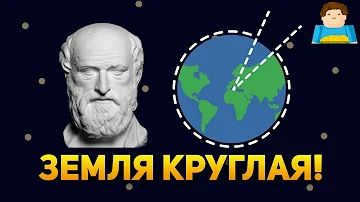
The Sun as the focal point for the orbits of Earth and Venus
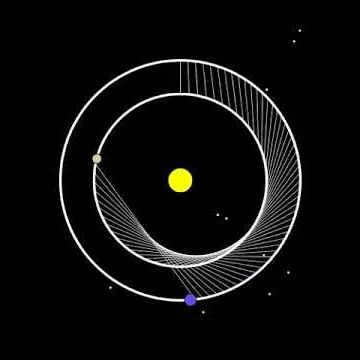
What method did Eratosthenes use to calculate the Earth’s diameter?
It was discovered that Earth is a spherical object by studying the shape of its shadow during lunar eclipses and the variations in its appearance.

Planet Earth
Nowadays, we have the technology to measure the circumference of the Earth using advanced equipment and satellites. However, there is no need to create complex instruments like Eratosthenes did over two millennia ago. He was able to calculate the Earth’s size without ever stepping outside of the library where he conducted his research.

Eratosthenes, a Greek scientist, resided in Alexandria, Egypt, from 276 to 196 BC. He was employed at the Musaeum of Alexandria, which served as both a museum and a scientific hub during that era.
The Musaeum boasted various facilities such as a botanical garden, a vivarium, an astronomical observatory, and laboratories. Within the museum’s auditorium, scholarly debates would take place, while the triclinium (dining room) was a gathering spot for intellectuals to dine and engage in conversation.
Fascinating fact: Over 2,000 years ago, Eratosthenes, a Greek scientist, successfully calculated the Earth’s circumference.
Eratosthenes held the position of overseeing the Museion library, which housed an impressive collection of approximately 100,000 books inscribed on papyrus scrolls (a particular type of paper crafted from the fibers of the papyrus plant). Eratosthenes possessed an insatiable curiosity about the vast realm of knowledge. He diligently delved into diverse subjects such as philosophy, history, and the natural sciences, even taking on the role of a theater critic. Despite his broad range of expertise, some of his peers at the Museion dismissed him as a dilettante, an individual with a superficial interest in many things, but lacking in profound understanding.
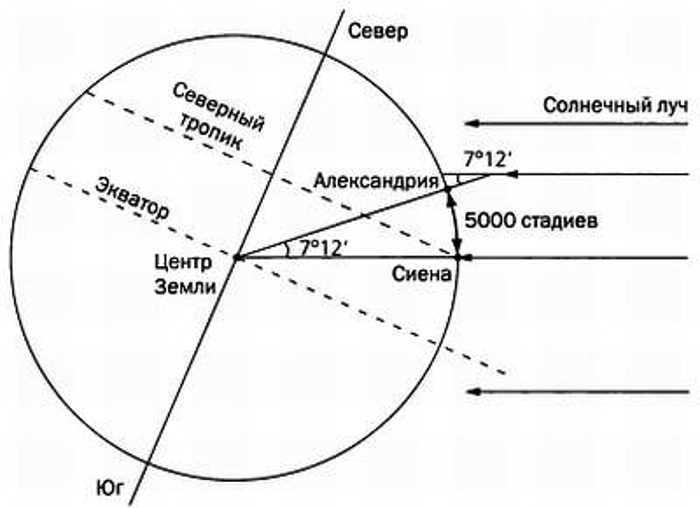
Eratosthenes became aware of a peculiar occurrence in Siena, a city located far south of Alexandria, through the accounts of passing travelers. These travelers reported that on the longest day of the year, precisely at noon, the shadows in Siena vanished. The sun was positioned directly overhead, casting its rays directly downwards. If one were to observe the water in the reservoir closely, they would be able to catch a glimpse of the Sun’s reflection at the bottom.
Eratosthenes embarked on a journey to Siena and personally witnessed the phenomenon. When he returned to Alexandria, he made an intriguing discovery: even at noon on the summer solstice, the walls of the Museion still managed to cast a shadow on the ground. This seemingly insignificant observation became the key to Eratosthenes’ groundbreaking calculation of the Earth’s circumference. Now let’s delve into the method he employed to achieve this remarkable feat.
Eratosthenes was aware that the distance between the Earth and the Sun was immense, resulting in parallel rays of sunlight reaching both Siena and Alexandria. This means that the rays of sunlight that hit the ground in Alexandria are parallel to the rays that hit the ground in Siena simultaneously. If the Earth were flat, shadows would vanish completely on June 21st. However, Eratosthenes deduced that since the Earth is curved, the walls and columns in Alexandria, which is 500 miles (1 mile equals 1.609 kilometers) north of Siena, would be tilted in comparison to those in Siena.
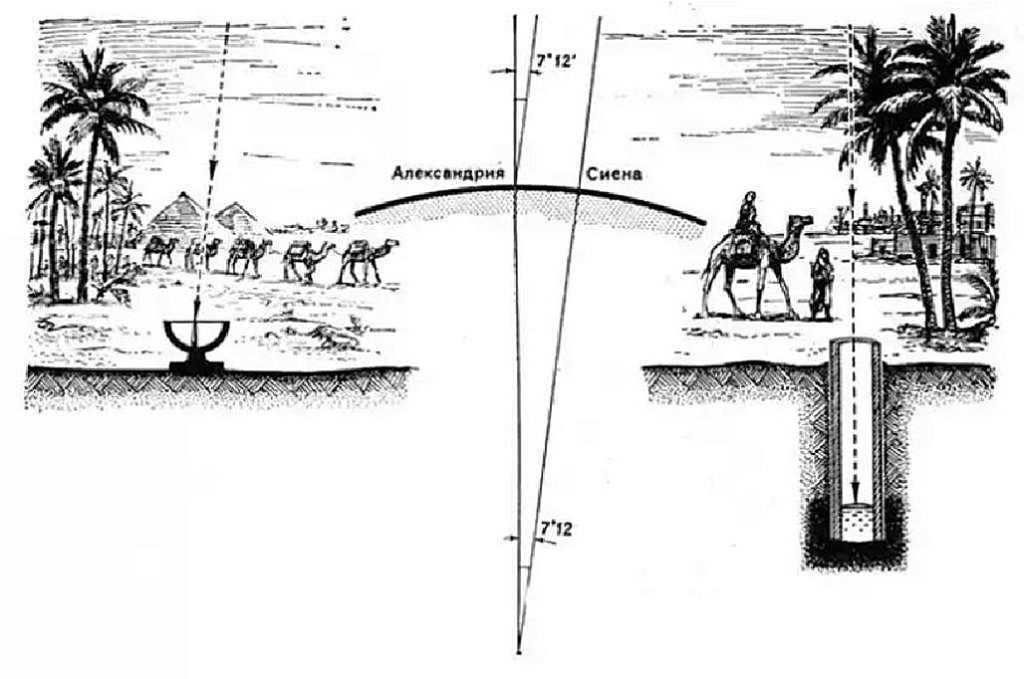
Therefore, during midday on the initial day of summer, Eratosthenes determined the length of the shadow cast by an obelisk located near the museion. With knowledge of the obelisk’s height, he effortlessly computed the distance between the top of the obelisk and the end of the shadow. This resulted in the formation of an imaginary triangle. After outlining the triangle, Eratosthenes proceeded to calculate its angles using the principles of geometry known at that time. He discovered that the angle of deviation between the obelisk and the sunbeam was slightly over 7 degrees.
Since in Siena, objects that stand vertically do not cast shadows, the angle formed between them and the sunbeam is zero degrees. In other words, there is no angle. As a result, Alexandria is located 7 degrees away from Siena on the circumference of the Earth. This angle between the two cities accounts for 1/50th of a complete circle. A circle typically consists of 360 degrees, and the Earth’s circumference is no exception to this rule. Eratosthenes took the distance between Siena and Alexandria, which is 500 miles, and multiplied it by 50 to calculate the Earth’s circumference. The result was 25,000 miles. Modern scientists, who have measured the Earth’s circumference using advanced techniques, have found it to be approximately 24,894 thousand miles. Despite this slight difference, Eratosthenes has proven himself to be a highly accomplished scientist rather than a mere amateur.
Determining distances on the Earth’s surface
Geodesy is currently a dedicated scientific field that focuses on calculating distances on the surface of the Earth. Geodesists employ specialized tools to measure angular distances. They also analyze gravity fluctuations to accurately determine the Earth’s shape. Satellites play a crucial role in angle calculations. These satellites are positioned at the apex of an imaginary triangle, with the other two vertices located at specific points on the Earth’s surface.
Calculation of the Earth’s Circumference
In the event that an error is detected, kindly highlight the specific text segment and proceed to press Ctrl+Enter.


Our planet, known as Earth, is home to diverse and fascinating landscapes.
The concept of the equator, although not a physical entity, plays a crucial role in our understanding of Earth’s geography. It is an imaginary line that runs through the center of our planet, perpendicular to its axis of rotation. This line has been widely accepted by major international geographical organizations and is represented in the form of a circle.
By traversing exactly through the middle of Earth, the equator effectively divides the planet into two equal halves – the Northern Hemisphere and the Southern Hemisphere. This division has significant implications for our understanding of global geography.
One of the key reasons why the equator holds such importance is its role as a reference point for navigation. It is assigned a latitude of 0 degrees, serving as a starting point for measuring other lines of latitude, known as parallels.
Geographical Features of the Earth’s Equator
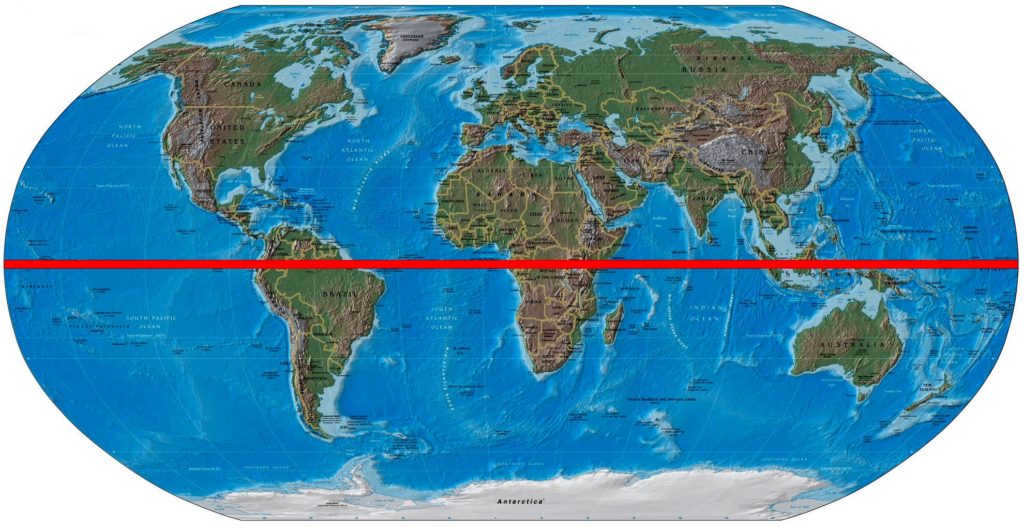
It can be said that the Earth can be approximated to a sphere with an average radius of 6371.3 km. However, this representation is not entirely accurate and may not always be suitable for precise calculations. Taking into account scientific concepts and data, the shape of the Earth is not a perfect sphere, but rather described by the concepts of a geoid or an ellipsoid, according to experts in the field.
Fascinating fact: The Congo River, located in Central Africa, is the most voluminous and second longest river on the continent. However, what makes it truly unique is that it is the only river in the world to cross the equator twice.
The highest rotational speed of the planet is achieved at the equator. This phenomenon can be easily explained by the Earth’s maximum radius at this latitude. Therefore, the circumference of the equator is 40,075 kilometers and dividing this number by 24 hours (the time it takes for the Earth to complete one rotation), we can determine the rotational speed of the Earth at the equator. It is approximately 1670 km/h. As one moves closer to the poles, the speed decreases.
The Equator, Longitude, and Latitude
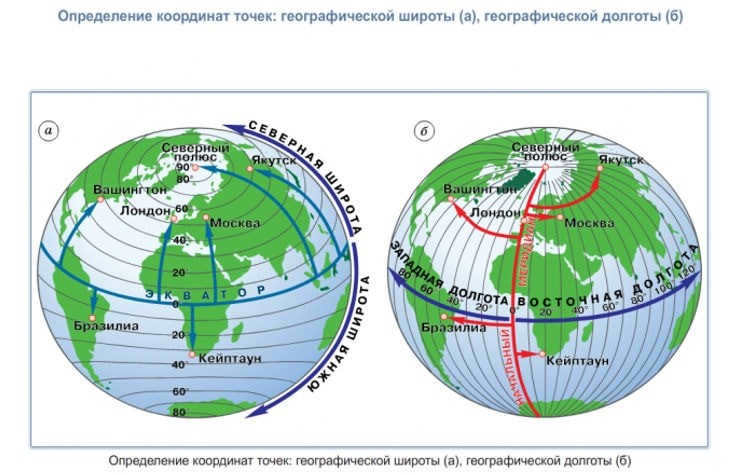
By definition, the equator is designated as latitude 0°. This latitude is one of the five important latitudes for navigation that are widely accepted by the geographic community. The other four are:
- The Arctic Circle;
- The South Polar Circle;
- The Tropic of Cancer;
- The Tropic of Capricorn.
Latitude 0° can be considered the only line that meets the definition of a great circle.
The great circle, on the other hand, refers to any circle that spans the surface of the globe, dividing it at its center. For instance, the equator runs along the planet’s center, dividing it into two equal halves. However, other latitudes cannot be classified as great circles because they divide the circle unequally due to their proximity to the poles.
On the other hand, parallels can be considered great circles as they meet the criteria. However, it’s important to note that the Earth is shaped like an ellipsoid, so the length of any parallel is shorter than the equator, resulting in smaller halves.
Regions located on the equator encounter the briefest periods of sunrise and sunset. This phenomenon can be attributed to the fact that the Sun’s trajectory is nearly perpendicular to the horizon for the majority of the year. The duration of daylight hours (from the moment of sunrise to sunset) remains relatively constant throughout the year, surpassing nighttime by approximately 14 minutes. This discrepancy is due to atmospheric refraction (the bending of the Sun’s rays) and the convention that considers sunrise to occur when the upper edge, rather than the center, of the solar disk touches the horizon.
Weather conditions at the equator
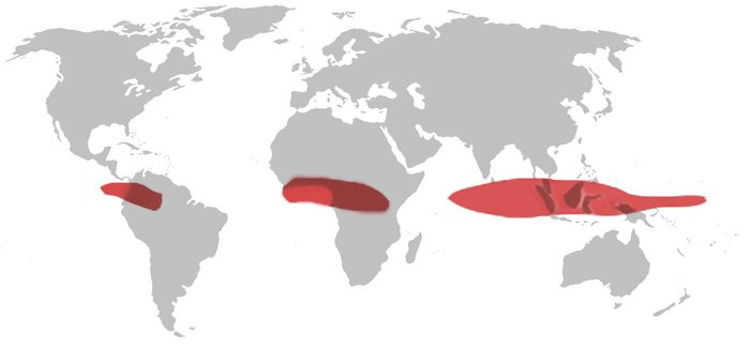
The changing of seasons is determined by the tilt of the Earth’s axis in relation to its orbit around the Sun. As the Earth rotates around the Sun, different hemispheres are either tilted towards or away from the Sun, resulting in varying amounts of solar radiation. This tilt and the Earth’s position in its orbit determine which hemisphere is experiencing summer or winter at any given time.
The equator maintains a consistent proximity to the Sun at all times. It spans across the three largest bodies of water on Earth: the Atlantic, Indian, and Pacific Oceans. The equatorial region experiences minimal fluctuations in temperature throughout the year, although there may be notable disparities in rainfall and moisture levels. This climatic zone is not typically characterized by the traditional seasons of summer, autumn, winter, and spring.
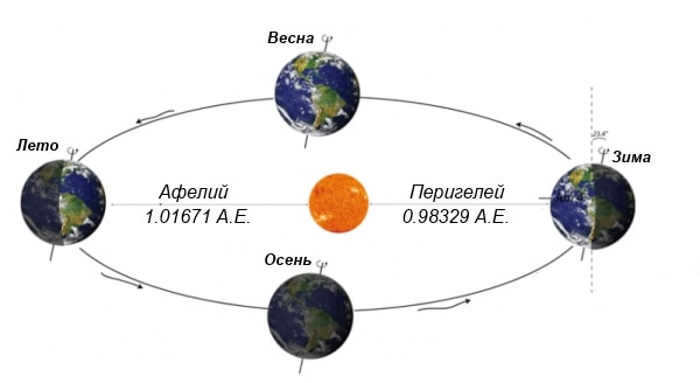
Lowlands situated along the equator typically experience a tropical rainforest climate, which is also referred to as an equatorial climate. While certain regions may have a tropical monsoon climate due to cold currents, resulting in a dry season in the middle of the year, the Somali Peninsula experiences an exceptionally dry climate despite its equatorial location, largely due to the Somali current generated by the East Asian monsoon.
Fascinating tidbit: It is worth noting that some countries have derived their names from the word “equator,” including Ecuador, Equatorial Guinea, and Equatorial Africa.
The equatorial lowlands experience average annual temperatures of approximately 31°C in the afternoon and 23°C during sunrise. The amount of rainfall in this region is significantly higher compared to areas located further away from the equator, ranging between 2,500 and 3,500 mm. With around 200 rainy days per year, the equatorial lowlands receive ample precipitation. Despite the consistently high temperatures throughout the year, certain elevated areas such as the Andes and Mount Kilimanjaro still maintain glaciers. The highest point in this region is the southern slopes of Cayambe Volcano, reaching an altitude of 4,690 meters, while its summit stands at 5,790 meters. Remarkably, this is the only location along the equator where snow can be found on the earth’s surface.
When you travel in any direction away from the equator, the level of solar radiation diminishes, which leads to the creation of different climate zones. However, due to the consistent weather patterns year-round, the equatorial zone is known for its exceptional biodiversity, surpassing any other region on Earth. The lush forests that thrive here are often referred to as the “lungs of the Earth,” as they generate the oxygen that sustains all living organisms.
Countries situated on the equator
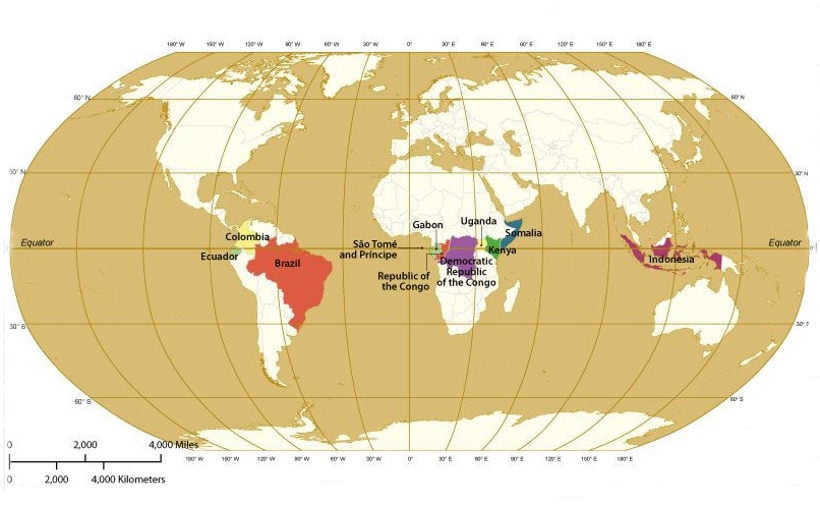
A total of 11 countries are situated on the equator. Starting from the Prime Meridian and moving eastward, the countries located at Zero Latitude are:
- São Tomé and Principe;
- Gabon;
- Republic of Congo;
- Democratic Republic of Congo;
- Uganda;
- Kenya;
- Somalia;
- Indonesia;
- Ecuador;
- Colombia;
- Brazil.
In addition, there are two countries whose territorial waters are crossed by the equator, but do not have direct land contact:
The equator serves as the optimal starting point for space flights and the construction of spaceports. One notable example is the Guiana Space Center, located in the capital of French Guiana. These spaceports greatly benefit from leveraging the natural rotation of the planet, which provides an added boost in speed. This speed reduction ultimately decreases the amount of fuel required for propelling a vehicle eastward (in alignment with the planet’s rotation) into orbit. Additionally, it eliminates the need for costly maneuvers to compensate for any tilt during launches.
Scientists use the precise measurement of the Earth’s circumference at the equator as a crucial parameter for conducting a variety of calculations. Apart from its fundamental role in geographical calculations, this value plays a significant role in fields like geodesy and astronomy. The measurement can be expressed in kilometers, miles, or meters.
The primary characteristics of planet Earth
Throughout history, individuals have always been intrigued by the various aspects of our planet, leading to calculations of Earth’s circumference along the equator in kilometers.
Presently, the astronomical figures for Earth’s parameters are defined as:
The planet consists of the following components:
| Name | Depth, km | % of total volume |
| Earth’s Crust | 5-70 | 1 |
| Mantle | 35-2890 | 70-80 |
| Core | 2890-6371 | about 30 |
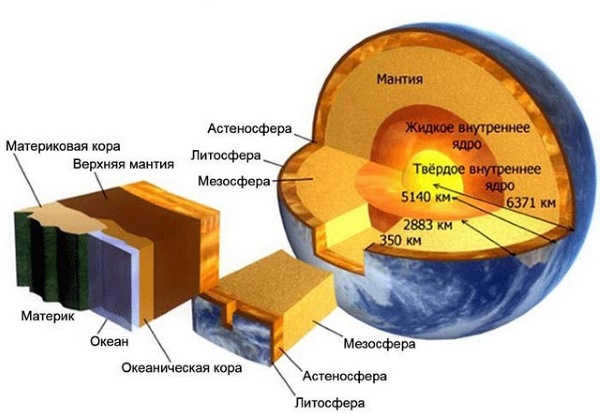
The Earth, estimated to have formed approximately 4.5 billion years ago, stands out among the other celestial bodies in our solar system due to its ability to support life. The key factor behind this distinction is the favorable distance between the Earth and the Sun, which is around 150 million kilometers.
Water, the foundation of life, covers approximately 71% of the Earth’s surface. Additionally, the Earth’s atmosphere, composed primarily of nitrogen (78%), oxygen (21%), and argon (1%), plays a crucial role in creating the ideal conditions for life to thrive.
The area of our planet where living organisms exist is known as the biosphere. It stretches from the depths of the deepest ocean trenches to a height of 9,000 kilometers above sea level.
The Earth’s Shape
The Earth’s shape is not a perfect sphere, but rather a flattened ellipsoid or spheroid. This causes variations in its circumference and diameter. The poles of the Earth are slightly compressed, resulting in a bulge along the equator and an increase in diameter and circumference.
Gravity and the Earth’s daily rotation also play a significant role. The centrifugal force is at its maximum at the equator and decreases towards the poles. This contributes to the difference in diameters (the equatorial diameter is 12,754 km and the polar diameter is 12,711 km).
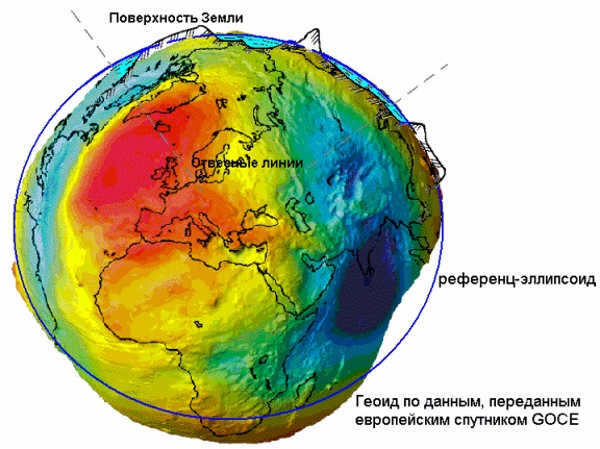

When it comes to the planet’s shape, local topography plays a minor role (continental heights and tidal deformations have a more significant impact).
In the field of astronautics and geodesy, the Earth’s shape is commonly referred to by terms such as:
- Ellipsoid of rotation, resulting from the Earth’s daily rotation around its axis.
- Geoid A geoid is a three-dimensional object with irregular shapes. Its surface approximately aligns with the Earth’s ocean surface and extends across the continents. The notion of “elevation above sea level” found in geography books and atlases is based on this reference plane. However, in reality, the water level does not always correspond to the geoid due to variations in temperature, salinity, and atmospheric pressure across different parts of the globe.
What is the Equator and Why is it Important?
The equator is an imaginary line that circles the Earth and runs through its center. It is considered to be the longest parallel on Earth, measuring 40,075 kilometers in length. The equator is perpendicular to the Earth’s axis of rotation and is equidistant from both the North and South Poles.
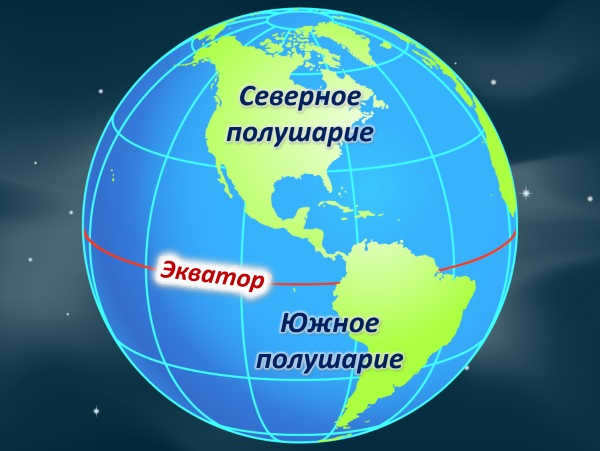
Scientists utilize a symbolic circle with a radius equivalent to the Earth’s average radius when establishing the prime meridian. Eratosthenes, a Greek geographer, astronomer, and philologist, was the first to successfully determine the length of this conventional line in the 3rd century BC. Subsequently, numerous scientists attempted to calculate the length of the equator.
In the 17th century, the Dutch astronomer Snellius proposed a method for determining the circumference of a perfect circle, without considering any obstacles such as mountains or elevations that may be present. Fast forward to the mid-19th century, and the Soviet astronomer and geodesist F. Krassovsky was able to calculate the length of the Earth’s elliptical shape. This calculation, made in the middle of the 19th century, now serves as a standard reference for scientific research and development.
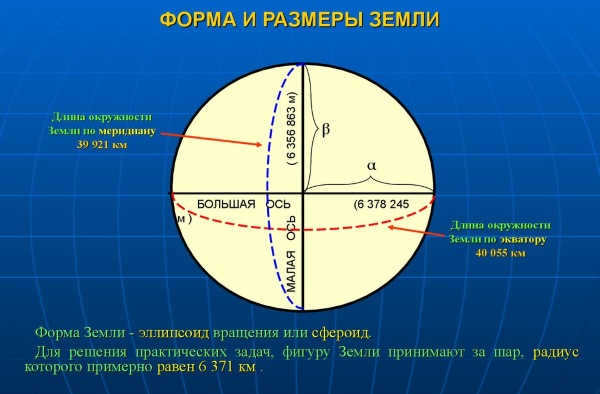

The equatorial region on geographical maps enables scientists to conduct calculations, locate various natural entities, and comprehend climatic zones.
The imaginary line (equator) is situated closest to the center of our solar system, thus receiving the highest amount of thermal radiation.
Conversely, the further the distance from the polar boundary, the colder the area becomes. Within the equatorial zone, summer persists continuously, and the air masses are hot and humid due to consistent evaporation. In this region, day and night have equal durations, and twice a year (during the equinoxes), the sun’s rays shine vertically downwards.
Calculating the Earth’s Circumference: A Historical Method
The current measurement of the Earth’s circumference along the equator, in kilometers, relies on advanced technology and satellite systems. However, it is possible to determine this value without the use of sophisticated instruments. This method was exemplified by the ancient Greek scientist Eratosthenes, who conducted his research in a scientific complex comprised of an observatory, a vivarium, and a laboratory.

The sun was directly overhead, and its rays were shining straight down onto the ground. If you looked at the surface of the body of water, you could see the reflection of the sun on the bottom. The astronomer returned to his home settlement and noticed that during the longest day of the year at noon, the walls of the buildings and everything beyond them cast a shadow on the ground.
By considering his observations, the astronomer was able to calculate the approximate circumference of the earth. His method was as follows: due to the vast distance between our planet and the sun, the rays of heat descend onto the cities below in parallel.
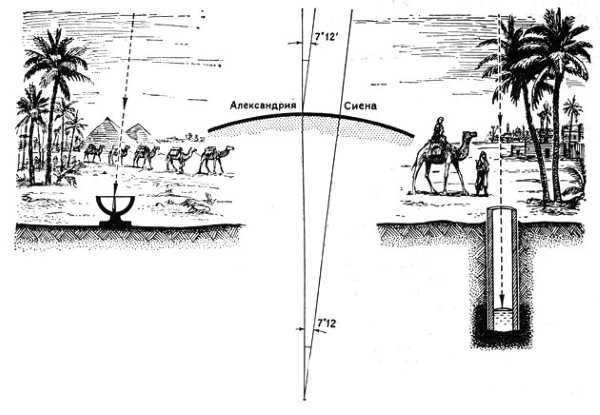

In a hypothetical scenario where the Earth was flat, shadows would vanish simultaneously everywhere. However, due to the planet’s curved nature, the buildings in Alexandria (which is 500 miles away from Siena) cast shadows at a different angle compared to the buildings in Siena. On a scorching afternoon, a scientist conducted measurements on the shadow produced by a stela.
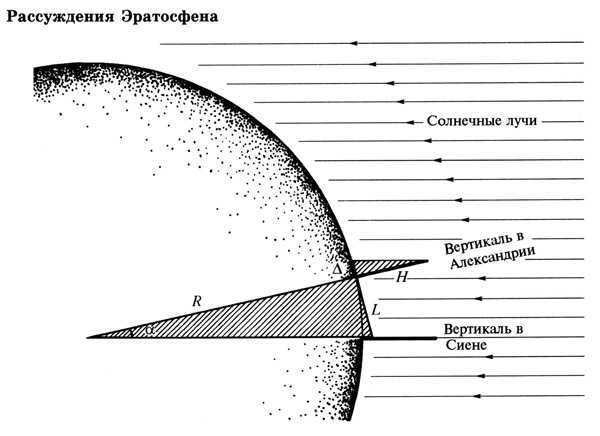

By using the length of the obelisk, he was able to calculate the distance between the top of the monument and the end of its shadow. This created a hypothetical triangle, and based on the geometric principles of the time, he determined the angles of the triangle. The resulting angle of divergence was approximately 70 degrees. This indicated that Alexandria is displaced along a circular line on the Earth by this amount from Siena.
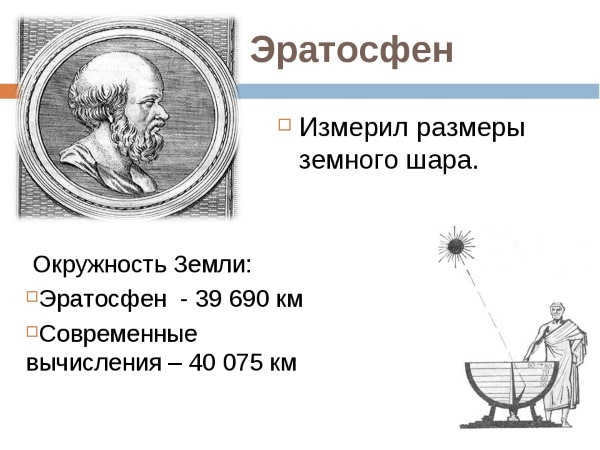
1/50th of the total circumference of the Earth is occupied by the angle between the population centers. All closed circular bands have a measurement of 360 degrees. By multiplying the distance between the cities (500 miles) by 50, the astronomer arrived at a calculation for the circumference of the planet – 25 thousand miles. Modern scientists, utilizing advanced equipment, have measured this value and determined it to be 24894 miles.
Calculating the Circumference and Radius
The circumference of the Earth along the equator is approximately 40075 kilometers. This value was determined using the following method:
Scientists have calculated that the polar radius is slightly shorter than the equatorial radius. The polar radius measures 6356.8 km, while the equatorial radius measures 6378.2 km.
There is a difference of 21 km between these two values. There are two possible calculations:
- Calculating the Earth’s circumference using the equatorial radius: 2 * 3.1415 * 6378.2 = 40074 km
- Calculating the Earth’s circumference using the polar radius: 2 * 3.1415 * 6356.8 = 39940 km
There are 13 countries that the equatorial line passes through. If you start at the prime meridian and head east, the countries you will encounter are:
- Principe and São Tomé is an island nation located off the coast of Africa. The equator passes through the island of Rolache, and a stele has been erected at this unique location.
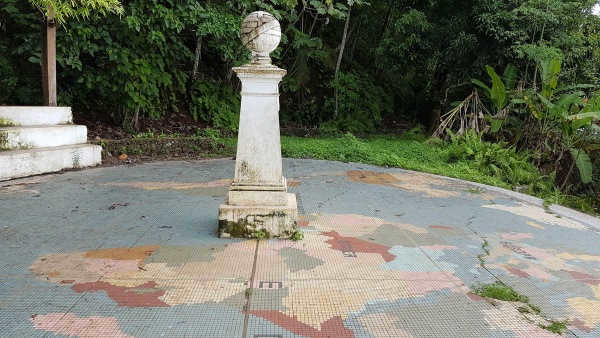
- Gabon Gabon is almost evenly divided by the equator, but this fact is not widely recognized. There are no specific signs or settlements in the hemispheric division zone.
- The Republic of Congo is characterized by lush tropical vegetation, demarcating the conventional boundary. In these areas, there is a lack of informational signage, except for a small weathered globe on a crumbling pedestal in Makua.
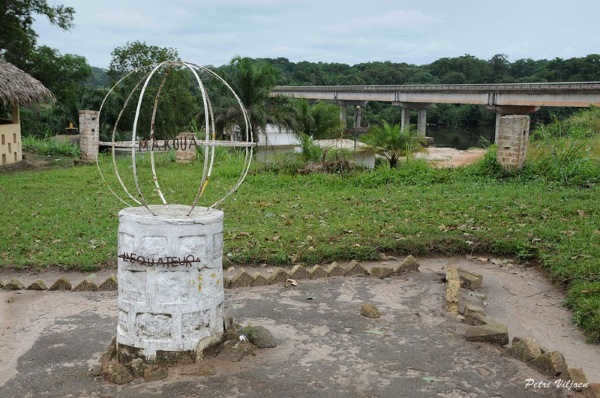
- The Democratic Republic of Congo. Commemorative plaques can be found in the town of Mbandaka and at locations where the meridian intersects rivers and highways.
- Uganda. A well-known tourist complex has been built near Lake Victoria in the town of Kayabu, consisting of two rings that mark the equatorial line.
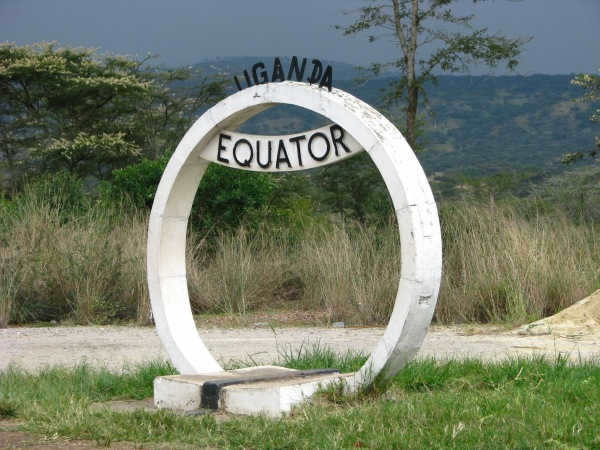
- Kenya. The equator is actively utilized in Kenya, contributing to the country’s developed tourism industry.
- Somalia. The equator passes through the southern part of Somalia, but due to its current instability and poverty, there are no signs indicating this attraction.
- Maldives. The boundary between the hemispheres runs along the sea surface, dividing the atolls of the Maldives.
- Indonesia. The meridian passes through three large Indonesian islands and approximately ten small islets.
- Kiribati. The imaginary line separating the Southern and Northern Hemispheres extends across the ocean.
- Ecuador. It was named after the equator. The highest point, located on the slope of Cayambe, reaches 4.7 thousand meters. This is the only place on the Earth’s “belt” where you can see snow.
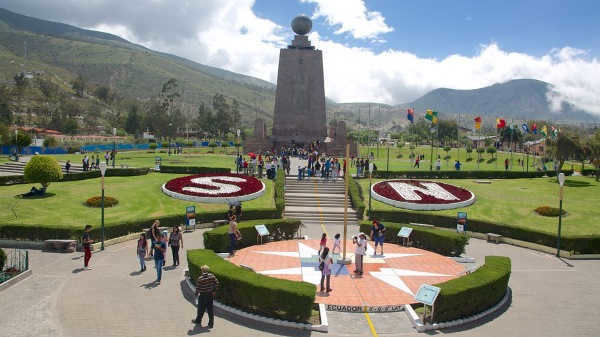
- Colombia. The hypothetical line that divides the Earth’s surface extends through the southern part of the country, in the region of dense jungle. The Apopolis River crosses this natural boundary three times.
- Brazil is located in the northern and western regions of the country, with the meridian passing through it. Numerous memorial signs can be found throughout the country.
What is the time required to complete a journey around the Earth on foot?
Scientists have long been able to calculate the circumference of the Earth along the equator in kilometers. With this information, it is possible to determine the amount of time it would take to travel this distance on foot.
To calculate this value, a simple calculation needs to be done:
- If we were to travel this route continuously at a speed of 5 km/h, it would take approximately 8000 hours or almost 1 year. (40075/5=8015/24=333).
Did you know?
Here are some fascinating facts about the equator:
- The areas surrounding the equator are known for their humid and warm climate, which supports a wide variety of flora and fauna.
- The equatorial forests are the densest in the world and some areas are so thick that they are virtually impenetrable.
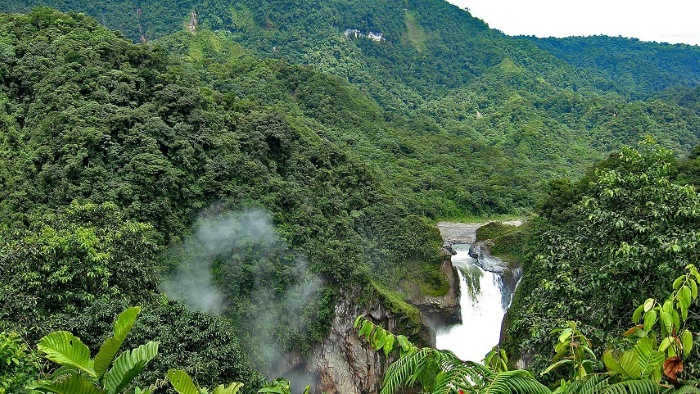
- The equatorial region experiences abundant rainfall, with precipitation occurring almost daily. This contributes to the vibrant and picturesque vegetation found in this area.
- The warm climate makes countries located along the equator a perfect destination for year-round tourist vacations.
- Wolf, an active volcano in Ecuador, straddles the meridian on both sides.
- The Congo River in Africa intersects the imaginary line dividing the globe into two halves.
- In the northern hemisphere, water drains in a clockwise direction, while in the southern hemisphere it drains in the opposite direction.
- The Earth’s equator, which encircles the planet, allows scientists to classify different climatic zones across the entire land area.
- The municipality of Macapa in Brazil is situated in both the northern and southern hemispheres simultaneously. Additionally, the Zeran Stadium, located here, intersects the Earth’s circumference at the exact center of the field. Adjacent to the stadium is a monument known as “Marco Zero”, which commemorates the main parallel. From this monument, the “Equatorial Street” extends all the way to the banks of the Amazon River.
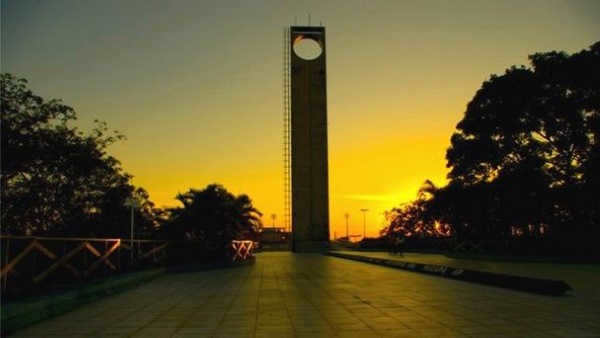
- In San Antonio, Ecuador, there exists a museum complex and obelisk named “Middle part of the world”.
- The Latin translation of the word equator is “to equalize.” However, in reality, the equator divides the planet into two almost identical hemispheres. These hemispheres may have slight differences due to the Earth’s imperfect shape.
- The equatorial region experiences endless summers and relatively consistent daily temperatures. This is because the sun’s rays evenly heat the Earth’s surface in this area.
- The Earth rotates at a speed of 465 m/s along the meridian.
- The ancient Greek astronomer and mathematician E. Kirensky was the first to accurately calculate the length of the equator. According to his calculations, the length of this trajectory is approximately 250 thousand stadia, or 40 thousand km, which is not significantly different from modern, more precise measurements.
- The equator intersects with 33 islands.
- When moving from the poles to the equatorial zone, the islands lose 0.53% of their weight due to centrifugal force and their distance from the center of the globe.
- The geostationary orbit is positioned approximately 35.8 thousand kilometers above the equator. Communication satellites are placed in this orbit, and a signal can travel back and forth at the speed of light in only a quarter of a second.
- Although the near-equatorial region covers only 5% of the Earth’s surface, it is home to nearly half of the world’s animal diversity. (Image:
 )
) - As per the age-old tradition of sailors, every ship that crossed the meridian was required to observe Neptune’s Day. On this occasion, fresh recruits were obliged to partake in a unique ritual. The procedure involved experienced sailors smearing the newcomers with fuel oil, followed by immersing them in the sea or a pool and finally cutting off their hair and beards with an axe. Those sailors who successfully completed this ceremony were awarded a special certificate exempting them from undergoing this consecration again.
It is fascinating to note that the Earth’s equatorial circumference plays a crucial role in determining the precise location of geographical points, as well as ensuring the accurate orientation of ships and airplanes.
Having knowledge of this measurement in kilometers allows us to grasp the magnitude of this value.
Article formatting by Svetlana Ovsyanikova
Guide on determining Earth’s circumference through Eratosthenes’ method:
The Earth is a sphere with a radius of 6,371 kilometers. When you multiply this number by 2, you get the diameter of the Earth, which is 12,742 kilometers. However, these measurements assume that the Earth is a perfectly smooth sphere, disregarding any variations in its topography.

It is a known fact that the Earth is slightly flattened at the poles, resembling the shape of an orange. Although this flattening is not easily noticeable, the difference in diameter between the equator and the poles is only 40 kilometers.
For over two thousand years, humanity has been aware of these measurements, thanks to the calculations made by the mathematician Eratosthenes, who was born in Cyrene, now known as Libya. Despite the limitations of his time, modern satellites have shown that Eratosthenes was only off by 500 kilometers in his calculation of the Earth’s circumference, which is quite impressive.
To gain an understanding of the magnitude of the planet, we can make a comparison between the distance to the Earth’s core and the distances on its surface. The Earth has a radius of 6,371 km, which serves as a useful measure.
What is the Earth’s radius?
The Earth’s radius varies depending on the specific area being measured, resulting in three primary radii:
- Equatorial Radius: 6,378.1 km
- Polar Radius: 6,356.8 km
- The average radius is 6,371.0 kilometers
In order to gain a deeper understanding, it is also necessary to comprehend the definition and significance of a radius.
What is the radius of other planets?
Earth is already quite large, with a radius of just over 6,000 km, but there are even larger dimensions in our solar system. Uranus, for example, has a radius that is four times larger, measuring 25,362 km. Saturn, on the other hand, has a radius that is nine times larger than Earth’s, measuring 58,232 km. Jupiter, the largest planet in our system, takes the prize with a radius of almost 70,000 km, which is 11 times that of Earth.
While Earth may be ahead in terms of size compared to Venus, Mars, and Mercury, it’s not by a significant margin. Venus, for instance, has a radius that is only 300 km smaller than Earth’s, measuring 6,052 km. Mars, on the other hand, has a radius that is almost half the size of Earth’s, measuring 3,390 km. And Mercury’s radius is about a third of Earth’s, measuring 2,440 km. As for the dwarf planet Pluto, its radius is about 1/5 the size of Earth’s radius.
How is the measurement of the radius conducted?
When dealing with a perfect circle, the process of measuring the radius is rather straightforward. One simply needs to take a ruler and measure the distance from the center of the circle to its edge. This measured distance is referred to as the radius.
When it comes to a three-dimensional object like a sphere, such as a marble, the calculation is essentially the same. The measurement is taken from the center of the sphere to one of its sides.
Given that planet Earth is not a perfect sphere, it possesses multiple radii of varying lengths. Consequently, there exists an equatorial radius, a polar radius, and an average radius. Depending on the location where the ruler is positioned, different distances will be obtained.
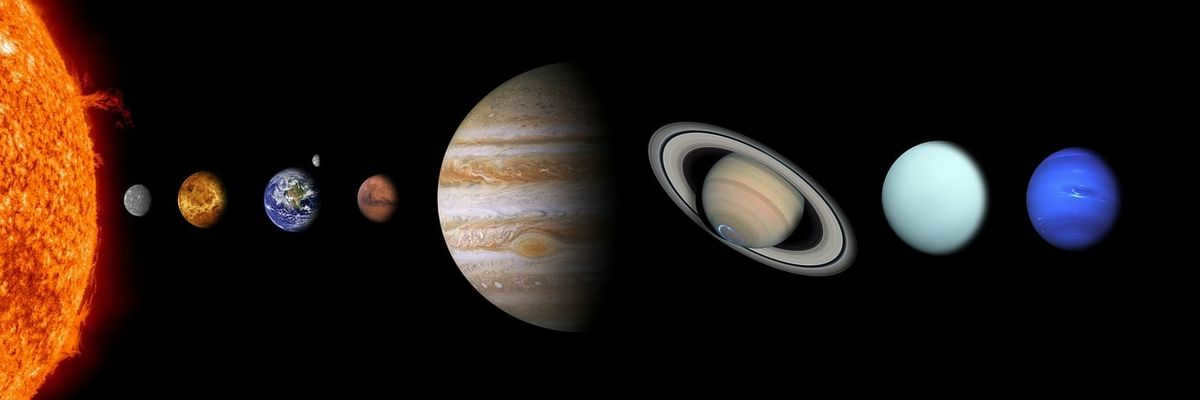
What is the disparity in percentage between the equatorial and polar radii of the Earth?
According to Newton’s theoretical estimation, this disparity was projected to be 26 kilometers. However, modern measurements indicate that the difference between the equatorial and polar radii is 21.4 km. This variance accounts for only one part in 300 of the Earth’s equatorial or polar radius.





